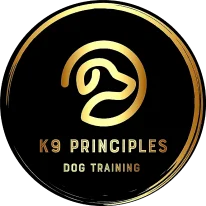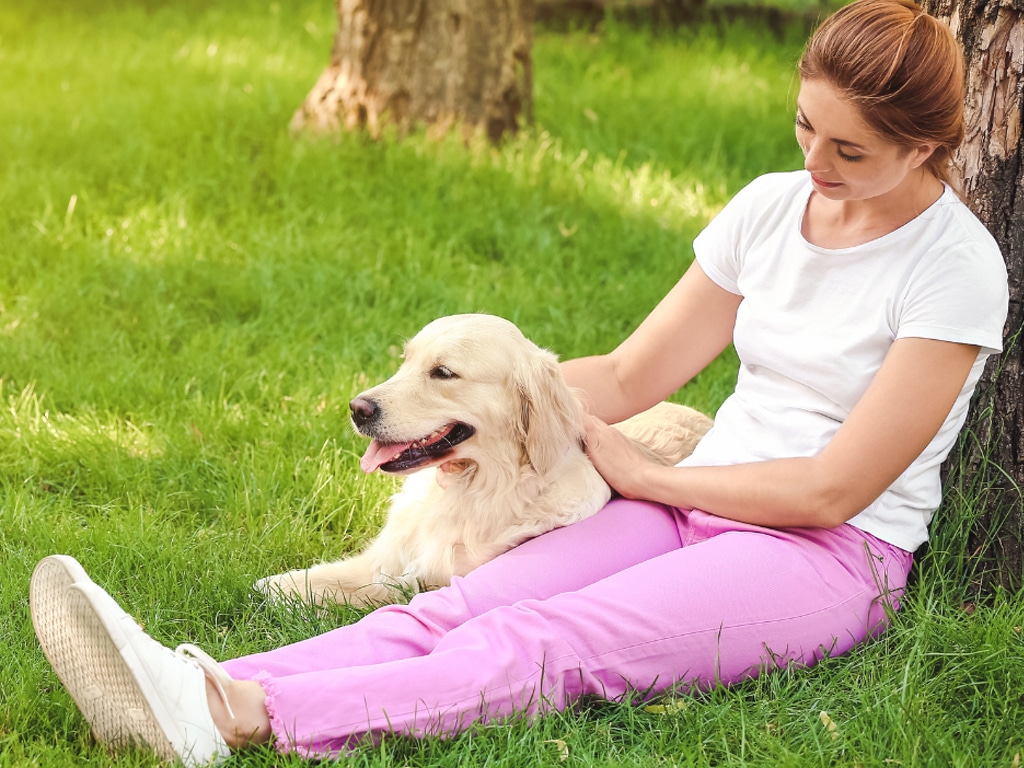Why Your Energy Matters in Dog Training: Transforming Behaviour with Body Language and Tone
When it comes to training a dog, your energy might not be the first thing you think of, but it’s one of the most critical aspects of building a successful and harmonious relationship with your pup. Dogs are intuitive creatures; they observe everything about how you move, speak, and behave. For a first-time dog owner, this may seem overwhelming, but the good news is that once you understand how your energy impacts your dog, you’ll have the tools you need to shape their behaviour effectively. Whether you’re just beginning dog training in Hamilton or working on reinforcing good manners at home, mastering your energy is the foundation of your training success.
Why Dogs Mirror Your Energy
Dogs are remarkably sensitive to the energy of those around them. This isn’t just about their ability to read body language or pick up on tone—it’s a deep-seated evolutionary trait. Dogs have lived alongside humans for thousands of years, adapting to our lifestyles and becoming highly attuned to our emotional states. Whether you’re excited, anxious, or calm, your dog is likely to reflect that energy back at you.
Imagine being in a chaotic environment where everyone is talking loudly, rushing around, and bumping into one another. You’d probably feel a bit unsettled, right? Dogs experience similar emotions when their human companions exude nervous or erratic energy. On the other hand, when you approach your dog with calmness and consistency, it’s like entering a serene room—your dog feels safe and secure.
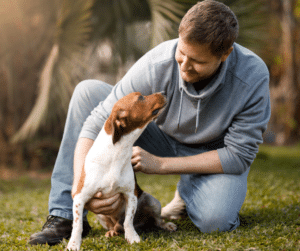
Dogs mirror energy because it helps them navigate their environment. If you’re confident and in control, your dog interprets that as a sign that everything is okay. Conversely, if you’re nervous or reactive, they may see that as a signal to be on edge themselves. This connection between human and canine energy is why maintaining a calm and collected presence is a cornerstone of effective dog training.
The Role of Pack Mentality in Behaviour
To truly understand why your energy is so influential, it’s important to recognise the concept of pack mentality. In the wild, dogs are pack animals, relying on the leadership of a calm, assertive leader to ensure the group’s survival. While your pet dog may live a life far removed from the wild, this instinctual need for structure and leadership remains.
Your dog sees you as part of their pack, and they look to you for cues on how to behave. If you’re consistent, confident, and composed, you provide a stable framework that helps your dog feel secure. On the flip side, if you’re erratic, unsure, or reactive, your dog may feel the need to take charge, which can lead to undesirable behaviours like barking, pulling on the lead, or even aggression.
Being a good leader doesn’t mean being harsh or overbearing. It’s about setting clear boundaries and exuding calm confidence. Think of yourself as the captain of a ship—your dog needs to know you’re steering them in the right direction, no matter the weather. This leadership role is especially important during Hamilton dog training, where professional trainers like K9 Principles guide owners in developing the calm, assertive energy that dogs naturally respond to.
Your Body Language Speaks Volumes
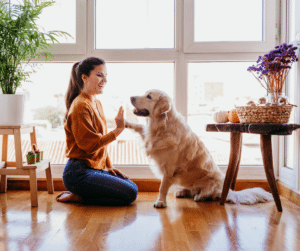
Dogs don’t rely on words to understand the world around them. Instead, they use their keen observation skills to read non-verbal cues like posture, gestures, and movement. Your body language can either reinforce what you’re trying to teach your dog or completely undermine it.
For instance, if you stand stiffly with your arms crossed while asking your dog to lie down, your dog might interpret your posture as unwelcoming or even intimidating. Conversely, if you relax your shoulders, kneel down, and use open gestures, you create a more inviting and clear signal for your dog to follow.
Inconsistency in body language is one of the most common mistakes new dog owners make. Imagine trying to teach your dog to wait at the door. One day you use a hand gesture to reinforce the behaviour, but the next day, you rely solely on verbal cues. Your dog might struggle to connect the dots, leading to slower learning. Consistent, predictable body language helps your dog understand exactly what you want from them, reducing confusion and frustration.
Professional trainers like K9 Principles often focus on helping owners refine their body language during our Hamilton dog training sessions. By learning to move with purpose and clarity, you can dramatically improve your communication with your dog.
Reading Your Dog’s Body Language
Communication with your dog is a two-way street. Just as your body language conveys information to them, their body language speaks volumes about their emotional state and how they’re interpreting a situation. Learning to read these cues can transform your ability to respond appropriately and effectively.
A dog that feels relaxed and happy will have a loose body posture, a wagging tail, and soft, open eyes. On the other hand, a dog that’s anxious or uncomfortable may tuck their tail, pin their ears back, or avoid eye contact. Subtle signs like lip licking, yawning, or sniffing the ground can also indicate stress or uncertainty.
By paying attention to these signals, you can adjust your approach to better suit your dog’s emotional state. For example, if your dog seems stressed during a training session, it might be a good idea to take a break and give them some space to decompress. Conversely, if they’re alert and engaged, it’s the perfect time to introduce new challenges or reinforce positive behaviours. Being attuned to your dog’s body language is an essential skill that enhances every aspect of dog training in Hamilton.
How Tone of Voice Impacts Training Success
While dogs may not understand the meaning of your words, they’re incredibly attuned to the tone in which you say them. Your tone of voice acts as an emotional barometer, telling your dog how to interpret the situation and what you expect from them.
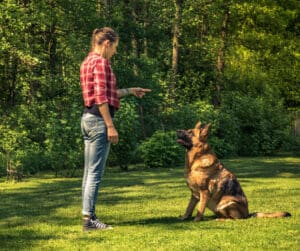
A calm, steady tone signals authority and focus, making it easier for your dog to follow your cues. For example, when encouraging your dog to come back to you, using a neutral but inviting tone helps communicate that you’re in control and approachable. On the other hand, a high-pitched or overly excited tone might signal playfulness, which could confuse your dog if you’re aiming for focus and calmness.
Frustration in your tone can also undermine your training efforts. Yelling or raising your voice out of anger can create fear and damage the trust between you and your dog. Instead, take a deep breath, collect yourself, and use a consistent tone that aligns with your intentions. K9 Principles professional dog trainers often emphasize the importance of tone during Hamilton dog training sessions, teaching owners how to use their voice as a tool for clear communication and positive reinforcement.
The Power of Calm Assertiveness
Calm assertiveness is one of the most effective tools you can use in dog training. It’s about projecting steady, confident energy that reassures your dog and encourages them to follow your lead. This approach is particularly useful in situations where your dog might feel stressed or overstimulated, such as encountering another dog on a walk or reacting to loud noises.
Imagine your dog starts barking at a stranger. If you respond with panic or frustration, you’re likely to escalate the behaviour. However, if you remain calm and assertive, redirecting their focus with a steady voice and confident posture, you’re demonstrating that there’s no need to worry. Your dog takes their cues from you, and your calm energy helps them navigate the situation more effectively.
K9 Principles incorporates calm assertiveness into their training philosophy, helping owners develop the skills needed to manage their dog’s behaviour in a variety of real-world scenarios. This is why their approach is so effective for dog training in Hamilton.
Real-Life Scenarios Where Your Energy Matters
Your energy plays a crucial role in everyday interactions with your dog. Take walking on a lead as an example. If your dog is pulling, reacting with frustration by yanking back or shouting only adds tension to the situation. Instead, staying calm and redirecting their attention to you with a consistent voice and clear body language helps them settle and focus.
Another common scenario is barking at visitors. Responding with anger or shouting often fuels your dog’s excitement or anxiety, making the behaviour worse. A calm, firm approach shows your dog that there’s no threat, helping them relax and learn more appropriate responses.
These situations highlight the importance of being mindful of your energy and how it influences your dog’s behaviour. With practice, you can turn challenging moments into opportunities for growth and learning.
Conclusion:
Your energy is the foundation of successful dog training. From the way you stand to the tone of your voice, every interaction shapes your dog’s behaviour and strengthens your bond. By mastering calm, consistent energy, you create an environment of trust and respect where your dog can thrive.
If you’re ready to take your training journey to the next level, contact K9 Principles for expert dog training in Hamilton or the surrounding area. Our tailored approach ensures that both you and your dog are equipped with the tools and knowledge needed for long-term success. Your dog looks to you for guidance—be the calm, confident leader they need to flourish.
And if you ever feel stuck, K9 Principles is here to help. Our expertise in Hamilton dog training ensures that you and your dog are always on the path to success.
- Name: K9 Principles
- Address: Haldimand County, Greater Hamilton Area, Burlington, and Most of Norfolk County
- Phone: 289 880-3382
- Email: k9principlesinc@gmail.com
- Website: www.k9principles.ca
FAQs
-
A. Dogs are highly attuned to human emotions and can sense energy shifts, which influences their behaviour.



